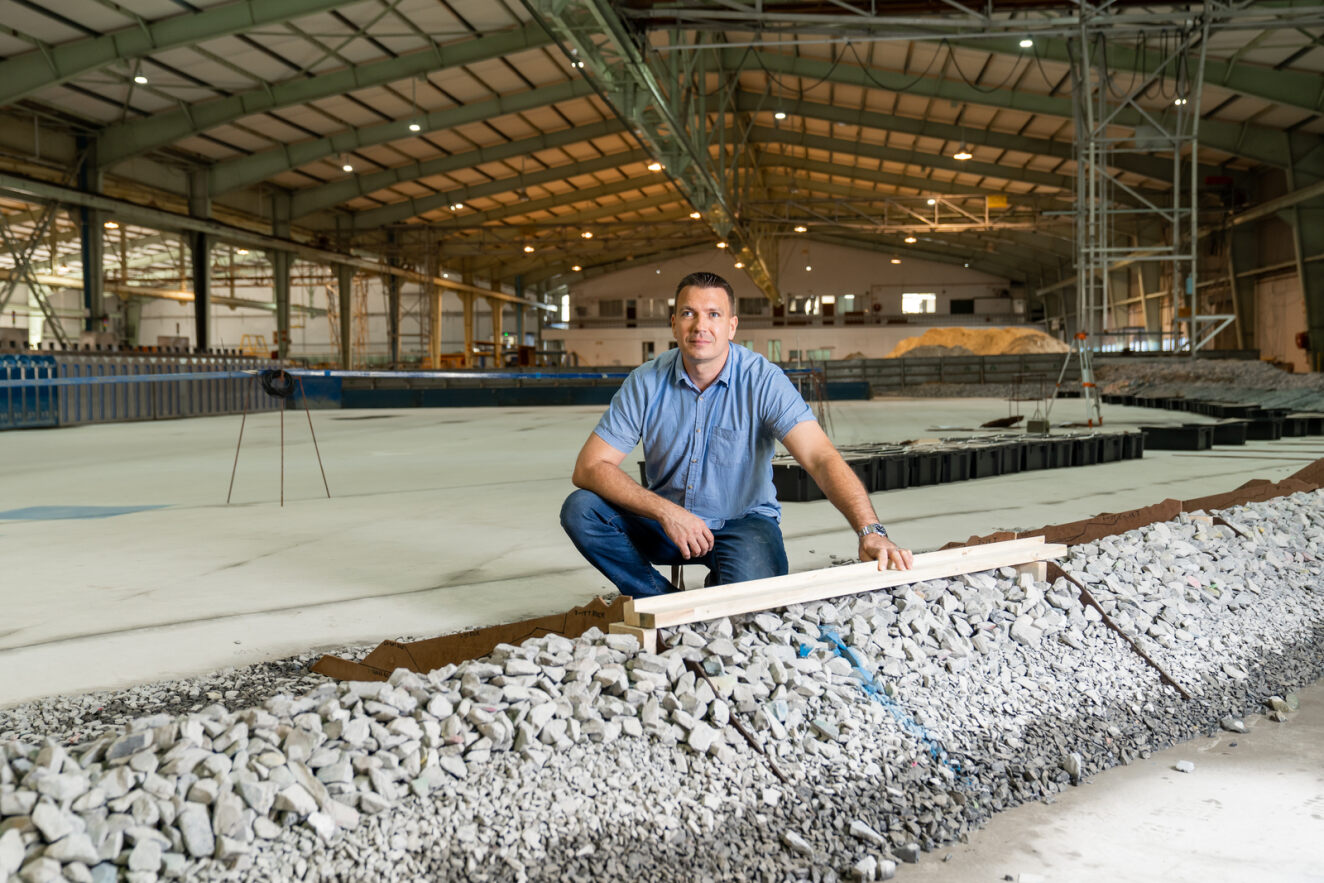CSIR research helps to understand the behaviour of a new SA-designed artificial concrete armour unit
CSIR research helps to understand the behaviour of a new SA-designed artificial concrete armour unit
Coastal engineers worldwide continuously strive to develop better designs for more effective protection of coastal infrastructure. The CSIR was instrumental in testing a new South African-designed concrete armour unit shape, which may one day become as famous as one of its well-known counterparts, the dolos.
CSIR research helps to understand the behaviour of a new SA-designed artificial concrete armour unit
Coastal engineers worldwide continuously strive to develop better designs for more effective protection of coastal infrastructure. The CSIR was instrumental in testing a new South African-designed concrete armour unit shape, which may one day become as famous as one of its well-known counterparts, the dolos.
Even on the most pristine coastlines, the ocean can produce obstructive storm conditions. To mitigate storm damage such as excessive erosion, coastal flooding and coastal and port infrastructure damage, artificial concrete armour units are used to protect natural and man-made structures against the powerful impact of rough seas.
As part of his Master’s research, CSIR researcher Carl Wehlitz investigated the stability and behaviour of newcomer Cubilok™. For months, he conducted 2D physical model tests to study the performance of the armour unit at the CSIR’s Coastal and Hydraulic Laboratory. These included additional scenarios beyond the initial scope to unlock further insights and understanding into the armour unit’s behaviour and limitations.
Similar to other concrete armour units, this one is designed to dissipate wave energy. “Now, we have the Cubilok™ that can be constructed at much larger sizes. This new trademarked armour unit has been developed by PRDW Consulting Ports and Coastal Engineers to accommodate a wide range of breakwater and revetment designs, including both single and double layers,” says Wehlitz.
Breakwaters and revetments are hard barriers built out into the sea to protect a coastline or harbour from the force of the waves. “The core of these structures comprises mainly sand material with a low permeability to absorb and reflect wave energy. If, however, the core is not sufficiently protected, it will simply be washed away by waves and sea currents. The sandy core is therefore protected by placing an armour layer over it which comprises larger rock or artificial concrete armour units,” Wehlitz says.
The Cubilok™ is still in its early stages of development and therefore has not yet been applied or tested in prototype conditions. However, preliminary results suggest that it can give South Africa a competitive advantage when it comes to designs that require excessively large armour units or poor founding conditions.
Meet the new concrete creation Cubilok™
The Cubilok™ is an interlocking concrete armour unit with high structural robustness and is considered to be highly resilient owing to its ability to sustain a reasonable amount of damage before all structural integrity is lost. By appearance, it is composed of a cuboctahedron-shaped core (a polyhedron with eight triangular faces and six square faces) with six identical arms extending from each square face. Each of the arms terminates with a pyramidal-shaped end. The Cubilok™ shape has four-fold rotational symmetry when viewed along an axis passing through two opposite arms and four mirror planes – two orthogonal and two diagonal.
Keeping the sea at bay
The technical assessment of the armour units involved placing them on a slope where they also established contact with other units. Various packing densities, and thus void ratios, were considered during the research study. The extent of damage was critical for the behavioural assessment, and this was done by comparing images captured before and after each test using the image-overlay technique.
When it comes to physical hydraulic designs, the goal is to place the armour units in an interlocking manner as this will increase the overall stability of the armour layer. “There is always a trade-off between an armour unit’s ability to interlock and its structural strength, where the latter has cautioned designers not to exceed a weight of 30 tonnes for interlocking units,” Wehlitz says. “However, given the high robustness of the Cubilok™, it can also function more as a gravity unit for designs where armour unit sizes of 60 tonnes or greater are anticipated. We anticipate using the Cubilok on milder slopes.”
The ideal design
Preliminary results indicate that the armour unit displays superior stability in withstanding high wave loading on milder slopes. With the construction of only a single layer of armour unit applied during the study, in a creative approach, Wehlitz set up a series of more than one hundred tests wherein the severity of the wave conditions was increased until failure of the armour layer set in. Here the unit’s ability to be applied as a single layer was displayed, along with all the far-reaching advantages associated with this type of design. In particular, it is accepted that the use of single-layer armour units is more economical compared to double-layer units.
“Based on what we observed, we were able to make recommendations for various aspects of this particular armour unit's shape, including the optimum packing density of the armour units, the size of the underlayer material, and inclination of the slope,” Wehlitz explains.
Investment in wave protection for larger coastal infrastructure
Throughout this research investigation, the limitations of the Cubilok™ were also identified. This paved the way for recommendations on more model testing to further investigate other parameters not covered during this round of 2D physical model testing. “It was important to get to grips with the behaviour of this unit. In this study, I simulated extreme storm conditions that covered a wide range of wave and structural parameters. One of the identifying characteristics of the Cubilok™ is the influence of wave steepness on the armour unit’s performance, where superior armour unit stabilities were observed at shorter wave periods.”
Increasingly, larger ports are being constructed into deeper ocean waters to accommodate the expansion of marine and coastal infrastructure. These developments also increase the urgency for larger marine infrastructure and thus, larger concrete armour units that will be able to withstand storms with ever-increasing severities.
Wehlitz says physical modelling is an essential component in developing and testing innovations such as the Cubilok™. It allows for a cost-effective way to refine the design and behaviour of a new armour unit before it is tested in real-life conditions. Even after a new unit has been certified for commercial use, physical model testing of these units included in a particular design remains essential to validate the unit's performance under site-specific conditions. This innovation is set to make a lasting impact on physical modelling in port and coastal engineering in South Africa.
This research study was supported by the CSIR as part of its Human Capital Development Programme.



